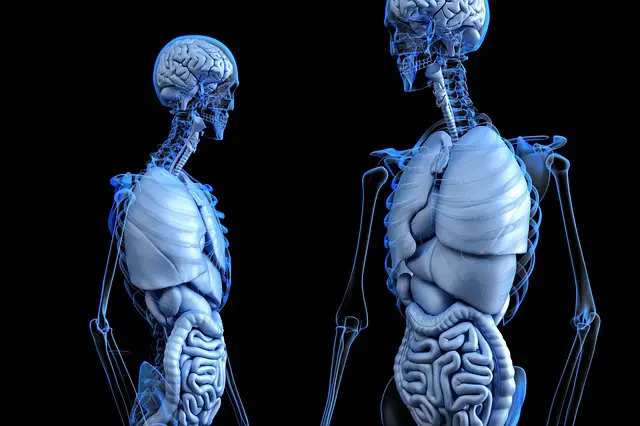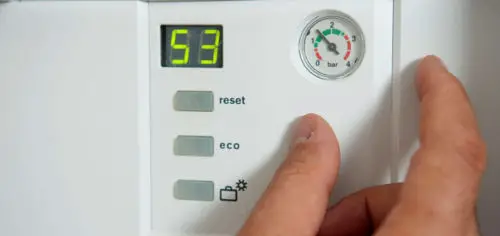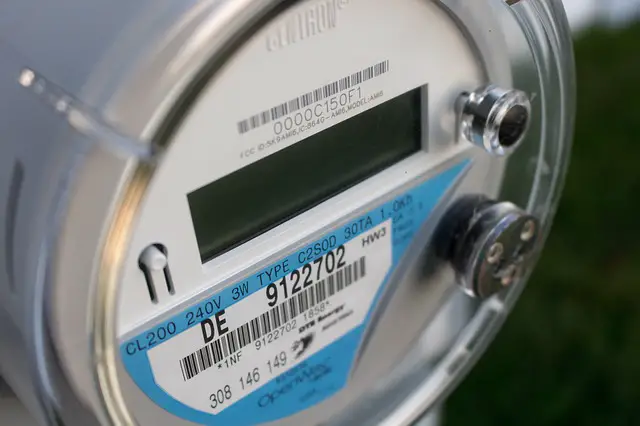You most likely understand that your body is a system. Blood is rushing about in your veins as a result of your pumping heart, your kidneys take out waste from your blood, your lungs allow you to breathe and it goes on. Meaning: your body is made up of a lot held together by their individual relationships, serving the aim of keeping you going.
However, what about a soccer team? A company? Are they systems as well? Definitely! You find systems everywhere –although some are more evident than others.
These chapters take you on a trip into the world of systems. They’ll describe the meaning of systems, where you can see them, and how they function and support themselves.

Chapter 1 – A system is a group of elements that are held together with a shared purpose.
Have you ever stopped and attempted to know the different systems that surround you? If you did that, you’d immediately see that they’re just nearly everywhere – from your body to your best football team to your workplace and the city you reside in.
The reason is that a system is basically a group of elements, connected by relationships and joined with a purpose. These elements can be physical and noticeable; however, they can also be intangible. For example, while you can both view and touch the branches, leaves, and roots of a tree, things such as academic skills in a university are more amorphous.
However, if they’re physical or not, every element of a system are connected by relationships. For instance, in the system of a tree, the relationships connecting the elements together are metabolic processes and chemical reactions. The element connecting the system of a university might be criteria for admission, examinations, and marks.
What is the purpose of a system?
That is known by the system’s observed behaviors, not its identified aims. For example, a government might mention that it has an aim of environmental protection; however, not put its money where its mouth is. Hence, environmental protection is not the government’s goal as it isn’t shown by what it truly does.

It’s significant to understand that the connections and aim of a system will usually determine it, even if its elements transform. A football team might obtain a completely new roster; however, its relationships between positions and a shared aim of winning games are the same.
Also, the behavior of a system divides into stocks and flows, which transform over time.
This is how they each function.
Stocks are the elements of a system and it can be accounted for at any specific time. For example, books that are in a store, cash in a bank and water in a bathtub. Conversely, flow is the transformation in stock over time due to inflows, which add, and outflows, which subtract. Cases of these are deaths and births or acquisitions and sales.
Chapter 2 – All sustainable systems depend on some type of feedback for stabilization.
Therefore, now you understand the meaning of stocks and flows of a system; however, it’s significant also to know that they’re changing always. The reason is when fluctuations in stock affect the inflows and outflows of a system it’s regarded to have feedback.
Also, there are different kinds of feedback. If a force stabilizes the difference between the real and wanted levels of stock then it’s called balancing feedback. That kind of feedback is a chain of rules or physical laws that relate to the level of stock and have the power to change it.
Consider the thermostat in a room that balances the temperature of the room. Here, the stock is the room temperature, heat from a radiator is the inflow and heat leaving through windows is the outflow. Therefore, when the temperature decreases, the thermostat sees the difference between the wanted temperature and the actual one within the room. Hence, it says the heater to switch on.

However, that’s only one kind of feedback; another type of feedback is that reinforcing feedback, which continuously produces more – or less – of what is already present. Therefore, the more cash you possess in a savings account, the more interest you accumulate, and the more interest you accumulate, the higher the money that you have in your account. The reinforcing mechanism can lead to continuous, even exponential, growth or ruin.
Both of these feedbacks are vital since one of the most common and significant system structures entails stock with one balancing and one reinforcing feedback.
For example, a positive birth rate functions as reinforcing feedback for a human population since it can lead to exponential growth – the more people in existence, the more babies present, and those babies will grow up to give birth to children their own. But, the population as well as balancing feedback – death. Therefore, as a population becomes unsustainably huge, the balancing feedback comes into effect as people die as a result of things such as disease and insufficient resources.
Chapter 3 – Systems that are working well are hierarchical, resilient and self-organized.
Have you ever thought of the reason why specific systems, such as well-functioning machines or the world’s ecosystems, work really seamlessly? As a matter of fact, resilience is a key responsible factor in a system’s capacity to get used to changing circumstances.
The reason is that resilience is a system’s elasticity, or how well it improves from a change. The resilience of any particular system is an outcome of its structure and its feedbacks, which functions in different manners, directions and on changing time scales. Consider the human body. It can defend itself from attacking forces, endure extensive temperatures, get used to changes in its food supply, move blood and even repair bones.
However, people usually underestimate the significance of resilience, abandoning it to goals such as productivity or comfort to the stage where the system breakdowns. For instance, industry makes use of natural resources for profit; however, due to that, species die-off, chemicals change the soil and toxins concentrate; therefore, environmental disasters become unavoidable.
But, resilience isn’t just the protection available to systems; some of the systems can as well self-organize. Meaning they can learn, expand, grown and develop their own structure: a single, fertilized ovum has the skill to turn into a completely grown human.

Therefore, as systems form new, progressively complex structures, they naturally organize themselves depending on a hierarchy. As a matter of fact, all the thing on earth is broken into subsystems that create larger subsystems, which form larger ones. A cell that is in your liver is a subsystem of the organ itself, in turn, is a subsystem of yourself, and you’re a subsystem of a family, which is a subsystem of a country, and it goes on.
However, why hierarchies?
The reason is that they decrease the level of information any particular part of the system has to deal with. For instance, because liver cells can decompose toxins, lung cells don’t have to.
Chapter 4 – Knowing some frequent errors will assist you to examine systems more productively.
Systems that we really understand can appear transparent; however, we’ll end up misinterpreting them if we concentrate a lot on their outputs and not sufficient on their actual behavior – or the manner they all operate over time. The issue is, since a system’s outputs are its most noticeable part, we usually simplify systems into chains of events. It’s so easy for us to just concentrate on the games won and lost, or the proportion of the Amazon that has been deforested.
Therefore, say you’re watching a soccer game where both teams are equally matched; however, a team is playing very well. When they win the match, the outcome will be less astonishing to you than to a person who just vies the final score or output.

However, we don’t only make that error. Also, we have the tendency to expect linear relationships, in spite of the non-linear nature of the world. For example, assuming you put ten pounds of fertilizer to an area, and it yields two bushels of wheat. Then you might anticipate that putting 20 pounds would yield four bushels.
But, the actual world doesn’t really work like that. If you put 20 pounds of fertilizer your produce might stay fixed since the additional nutrients disrupt the soil, decreasing its fertility.
And lastly, humans usually forget that systems are really hardly detached from one another. The reason is that our minds are just capable of processing a lot. Therefore, to make matters easy, we mentally separate each system.
But, it’s easy to forget that those limitations are artificial and we can get really used to them that they feel natural. The outcome is an inclination to think in regards that are really broad or really narrow.
For instance, if you’re brainstorming methods to decrease CO2 emissions, creating a thorough model of the planet’s climate will excessively make the process complicated; however, concentrating only on the auto industry would prove equally ineffective.
Chapter 5 – Systems that are corrupt are made by unequal power and can allow overuse.
Therefore, every system has common traits; however, some of them can create very unnatural and even difficult behavior. This can occur when the separate subsystems each have a different purpose, and it’s known as policy resistance.
This is how it functions.
If an actor within a system or any one of its subsystems acquires the advantage and utilizes it to change the system’s direction, the remaining subsystems will need to work double as hard to pull it back in line. The outcome is a system that appears stuck, replicating the exact issues continuously.
For example, both drug traffickers and addicts want drug supplies to increase; however, the law-enforcement doesn’t want that. Therefore, when the police stop drugs from getting into a country, costs on the street increase. Due to that, drug addicts commit more offense to pay more prices and suppliers invest in planes and boats so they can avoid the officials.

In order to fix that kind of system, it’s really essential to let go and change the energy and resources present toward combining the actors in the numerous subsystems. By doing this, they can discover a circumstance that works for everybody.
However, there can be other issues in a system. For example, when it makes use of a resource that’s commonly owned and not sustainable. The outcome is certainly failing.
Say the land is utilized by numerous shepherds who continue including more animals to their herds, the pasture will ultimately ruin as the grass doesn’t get the adequate time to regrow, the roots lose their hold on the soil and rain destroys it.
What is the reason why this occurs?
The reason is that the feedback between the resources and the user of the resources is either nonexistent or extremely delayed. In order to prevent failure, it’s essential to educate users so that they can know how their behaviors affect the resource and how they can restore it by controlling their use.
Chapter 6 – You can physically modify systems to increase efficiency.
You’re most likely considering that it would be great to have a method to make systems create more of the good and less of the bad. You are fortunate. The reason is that by altering buffers, system design and delays, we can create more effective systems.
How is that so?
System buffers –just like storage space, time and inventory–need to be an ideal size to work well. Therefore, a system can be stabilized by increasing the ability of a buffer. But, over increasing will make for an inflexible system. For instance, businesses purchase token inventory since allowing for the occasional product shortage is lesser than investing in expensive storage of goods that might not be bought.
Another significant factor is system design. The reason is that a well-designed system permits maximum efficiency and is less susceptible to change and has a better knowledge of its own limits and obstructions. For example, formerly, the only way between east and west Hungary ran through the capital city. The overcrowding it caused couldn’t be solved by the simple addition of traffic lights and the system needed a complete redesign.

Lastly, delays –which is the time it takes a system or its actors to see and react to change – signify another point of control. All systems have them; however, when a system’s delays turn into long term it finds it hard to react to short-term changes. Due to that, delays should be equivalent to a system’s rate of change.
In the instance of global economics, the world is usually striving for faster economic development; however, the physical reality of elements such as costs, factories, technologies, and ideas doesn’t change at an equal rate. Meaning, there’s a delay. Therefore, slowing down development and, hence, giving technology and costs time to catch up would make for a better efficient system.
Chapter 7 – Systems can be even be made to be more efficient by changing its internal mechanisms and guidelines.
Therefore, altering the physical elements of a system can make it better; however, there are other methods to solve issues. One method is to concentrate on the flow of information, the guidelines of the system and its self-organization.
Systems usually lack adequate information flows. Due to that, adding them can make important developments. For example, putting electrical meters in hallways rather than basements decreased energy consumption by one-third in some Dutch neighborhoods basically because the people had access to detail about their purpose and could modify how much power they used consequently.

However, if the people who gain from the system also have the skill to fix guidelines and use control over it, the system will not work effectively. If the world trade system is managed by businesses, run by businesses and mainly profits businesses, it will unavoidably ruin.
Also, when systems self-organize they can grow and learn by themselves– an interesting part; however, not one that usually terrifies humans as it entails losing control. The outcome is the burden of manmade restrictions on systems. But, this can usually lead to greater problems; however, allowing a system self-organize is a good decision.
Also, systems get into difficulty when they hold the wrong goals or paradigms. If a system is founded on the wrong goal and that the goal is transformed, the whole system will get used to it. For example, some nations have discovered that a centralized system of economic planning isn’t effective for them. When their goals changed, all the subsystems in the economy got used to the new model.
What of paradigms?
These are the deepest held views on which a system is founded –such as, “growth is good” or “one can have land.” Therefore, if a system’s paradigms are wrong, they have to be altered. Ecologists have started to change the paradigms of environmental protection. The outcome has been modifications in various systems such as people, industries, towns, and all the nations begin to acclimatize the manner they manage waste.
Chapter 8 – Listening to the inner workings of systems will assist you to know the world better
At this stage, you most likely know that systems can’t be controlled and are just understandable in the most general sense.
The good news is that: there are some basic steps that will assist you to navigate the world of systems better and improve their efficiency. Firstly, it’s significant to study how a system acts by learning its past and gathering information. The world is filled with misunderstandings, and the more information we have, the better decisions we can make. For instance, though you might think costs are increasing, they might as well be reducing.
As soon as you’ve gathered information, you should jot down how the system in question functions, jotting its structural arrangements and jobs. This will verify that your models are whole, tally and are reliable.
The next thing to do is to allocate the data in the system. Meaning, for a system to work well its information, has to be disseminated. Therefore, the more timely, correct and whole the data, the better the system will work.
While doing this process you should concentrate on what’s significant, both in aspects of measurable and immeasurable aspects. The reason is that humans have the tendency to put more value on quantity and numbers and less on quality as the former is very easy to measure and deal with. However, things such as democracy, security, freedom, justice, and democracy, are important as well, although they can’t be quantitatively measured.

Also, it’s significant to see how a system creates its own action. In order to that, just remember these questions:
Which external and internal factors create specific actions? Can these influences be controllable?
As soon as you answer these questions you’ll now notice where duty lies in the system and how behaviors are created and what effects they have. For instance, if you’re troubled about a late flight and you ask yourself these questions you’ll be much unlikely to take out your annoyance on an innocent stewardess.
Thinking in Systems: A Primer by Donella H. Meadows, Diana Wright Book Review
All the things we see, do and experience in this universe consists of systems. Although we cannot completely know them, guess their action or exercise power over them, the least we can do is observe the behavior and patterns they show. Doing that will allow us to assist them to work well and know when a faulty system needs repair.
Expect a positive result and not a negative one all the time.
It’s so easy to view the world as worse off than it really is and to believe that bad thing will occur. For example, say a salesman’s numbers fell one time; he’ll be very more likely to believe that they will fall again in the future and won’t be astonished if they happen. The long-term consequence is a lack of inspiration to develop things or drift to low performance. Therefore, don’t allow your anticipations of greatness reduce, rather focus on the reward.
